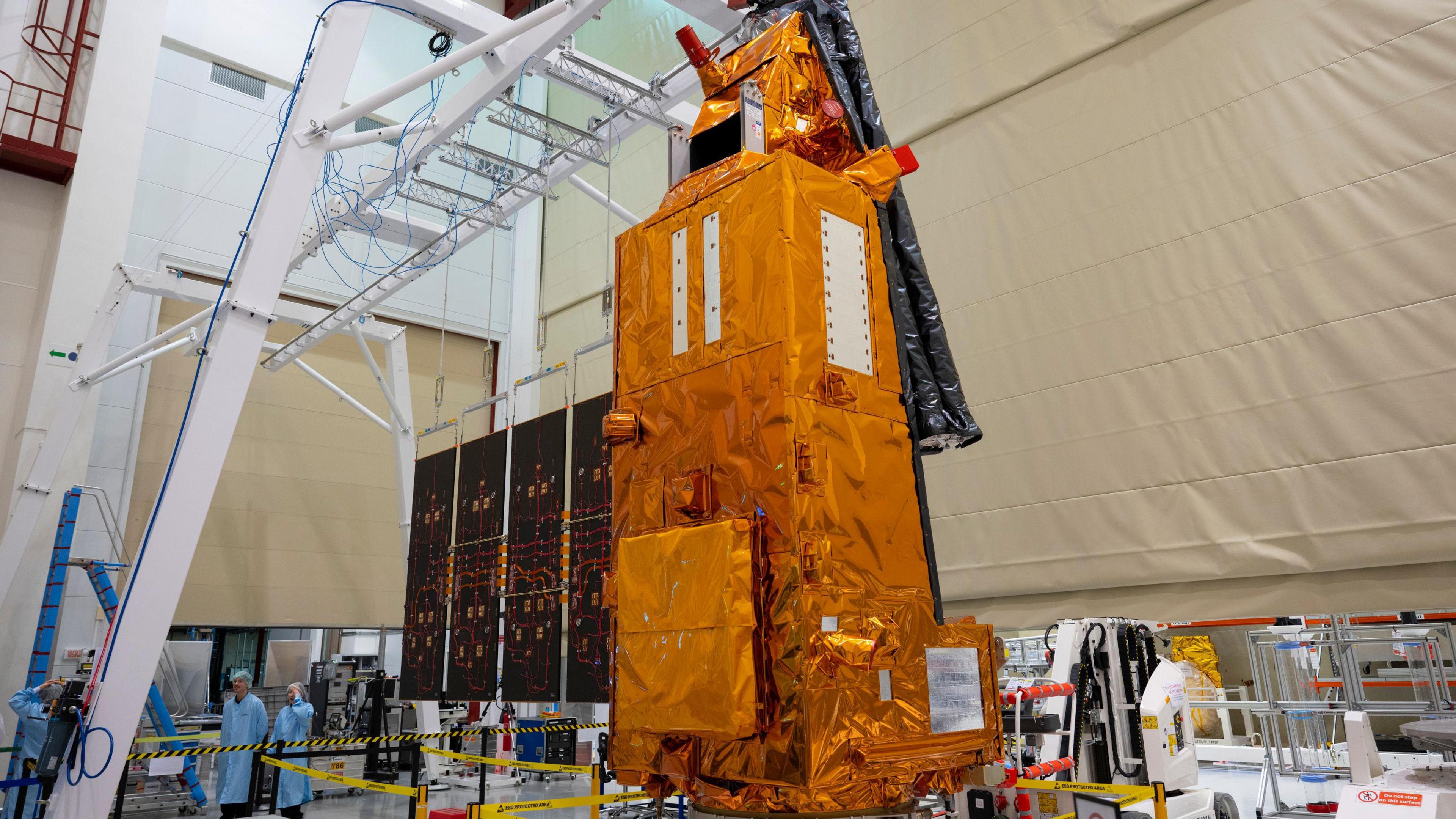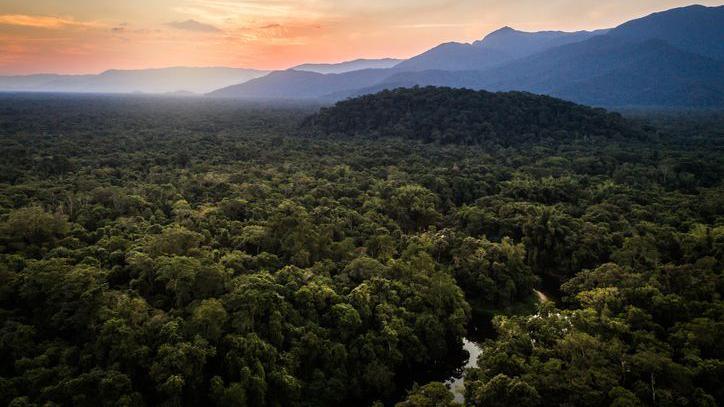All you need to know about the space mission spotting forests

- Published
The European Space Agency (ESA) is preparing to launch its newest space satellite later this month, called Biomass.
Its five-year mission is to provide detailed 3D maps of the world's most dense and remote tropical forests.
Using instruments on board, it will be able to measure the woody trunks, branches and stems of the trees.
The hope is that the data it collects will help experts better understand the state of our forests and how they are changing.
More space news
Giant space 'umbrella' to weigh world's forests
- Published26 August 2022
Amazing 'cosmic tornado' captured by James Webb Space Telescope
- Published27 March
Nasa astronauts back on Earth: What did they miss most?
- Published1 April
What is the Biomass satellite?

Biomass is the first space satellite to carry a long wavelength radar, called P-band.
This special radar means that it can scan deep through the forest canopy and collect information on different parts of the forest, such as tree trunks, branches and stems, where trees store most of their carbon.
This will allow the satellite to provide experts on the ground with new information on forest height and above-ground forest biomass from space.
Scientists will then be able to find out more about the state of our forests and how they are changing, and further our knowledge about the role that forests play in the carbon cycle.
The ESA mission will be divided into two phases.
The first one will provide detailed 3D maps of forests on Earth. This is important as it's not possible to find out the global mass of trees from the ground.
The second phase will produce five global maps which will allow forest height and above-ground biomass to be estimated.
Why is the Biomass mission important?

Forests are full of trees and other plants, which absorb carbon dioxide and release oxygen.
All animals, including humans, breathe in oxygen and breathe out carbon dioxide. This means trees help to provide us with the oxygen we need to survive.
Often referred to as "Earth's green lungs," forests absorb around eight billion tonnes of carbon dioxide from the atmosphere each year.
Experts say that by absorbing carbon dioxide, trees prevent pollution, improve air quality and slow down the effects of climate change.
This is why being able to calculate the global carbon cycle is essential to understanding how the world's forests are changing and the future effects this might have for our climate.
The new Biomass mission has been designed to help scientists do just that.
When will the Biomass satellite launch?

The mission is due to launch aboard a Vega-C rocket from Europe's Spaceport in French Guiana at the end of this month.
It arrived in the South American country in March, and is being carefully inspected to ensure that it is in good health after its long journey from Europe across the Atlantic Ocean.
Over the course of the next weeks, experts will do final checks and prepare the satellite for its mission.
If all goes well, it is due to take off on 29 April.
